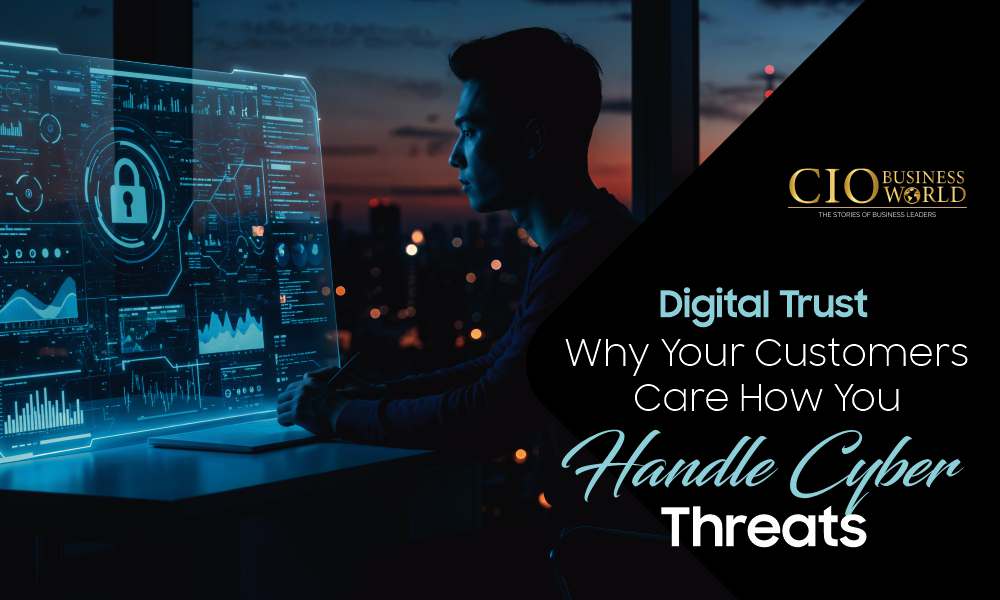We live in a world where data matters more than oil and breaches are common. Digital trust is no longer a nice extra for businesses – it needs to be at their core. Nonetheless, lots of organizations still treat cybersecurity like a back-office task separate from customer experience or brand strategy. That approach is becoming a liability.
What Is Digital Trust, Really?
Digital trust is more than just data encryption or firewalls. It is the confidence customers have in your organization– trusting you will keep their data safe, respect their privacy, and be open if anything goes wrong.
It is established on three fundamental pillars:
- Security – Making sure there is no unauthorized access to systems and data.
- Privacy – Maintaining the proper collection, storage, and usage of personal information.
- Transparency – Being openly communicated policies and incidents in a timely manner.
Whenever someone uses your app, website, or payment system, they form an opinion in an instant: Is this a business I feel comfortable sharing my information with? This split-second decision influences much more than the individual transaction – it also affects return visits and recommendations to others.
Understanding Digital Risk in Everyday Interactions
Digital trust is not created through abstract policy documents; rather, it is shaped during those personal moments when users engage with your systems. People are becoming more aware that using technology for things like logging in or checking out at the store has some hidden dangers.
They may not understand the mechanics of common infections like Trojans, ransomware, or credential stealers, but they feel the threat. One suspicious link, one sketchy-looking form, and hesitation creeps in.
This is why trust must be embedded not just in infrastructure, but in interface and communication. People need to feel as if their online experiences are seamless, secure, and offer real protection – because this gives them peace of mind.
The Emotional Economics of Trust
Trust in the digital space is all about where emotion meets the assessment of risk. With even technical non-savvy clients, caution is now on the increase. Maybe they don’t know what a Trojan or keylogger is in technical terms, but they have read the breach and scam headlines and are internalizing the risk.
Trust sticks- once lost, it’s very hard to get it back.
It’s not just about your actions – it’s the communication. The possible consequences of unclear privacy policies, not telling users about security breaches right away, and customer support that does not do its job well when there are signs of cyber attacks can be very severe and long-lasting.
Beyond Compliance: The Invisible Signals That Matter
Meeting GDPR, CCPA, or ISO 27001 requirements may keep you out of legal trouble, but compliance doesn’t equal trust. Customers interpret cues far beyond checkboxes:
- What language is used? Is your privacy statement in plain English or in legalese?
- Does your login screens/ checkouts look properly secure or scrawled-together and last-minute?
- Do you proactively share information on security features or threats?
Trust is dripped in through small cues. For instance, a push for enabling two-factor authentication or notice of a blocked suspicious login attempt gently builds confidence in your vigilance.
Turning Security Into a Brand Asset
Companies like Apple, Proton, and DuckDuckGo have turned security and privacy into brand pillars, not just technical requirements. But even businesses outside of tech – retail, logistics, finance – can do the same.
How? By:
- Publishing clear, honest transparency reports
- Educating customers about cybersecurity basics, like avoiding Trojan-laced links or phishing emails
- Humanizing data protection, with visible teams or tools users can relate to
Security should be part of the brand conversation, not just the IT department’s domain.
How to Build Digital Trust Intentionally
Do not discard threats – prove that you are concerned enough to protect. Here’s a strategic framework:
- Map Your Trust Touchpoints
Identify all the points where a customer could be wondering whether a given feature is secure. Analyze and re-assure or educate them.
- Invest in Security UX
Robust security design functions like valuable insurance – you hope you never need it, but will be grateful for it if you do! One way to signal this is by including prominent messages (for example, “Secure Checkout powered by X”), just make sure they don’t swamp users.
- Be Transparent When Things Go Wrong
A rapid, honest response to a breach can actually increase customer trust. Delay or downplay it, and you’ll lose not just users, but long-term reputation capital.
- Treat Cybersecurity as a Brand Function
Collaborate across departments – marketing, product, legal, and IT. Security shouldn’t live only in the SOC (Security Operations Center); it should be baked into messaging, design, and leadership vision.
Final Thoughts: Trust Is the Currency of the Digital Economy
In the digital era, every business is a data business, and customers expect the same level of protection from a coffee chain’s app as they do from a bank. Digital trust isn’t built in a day – but it can be lost in a single breach, Trojan scam, or vague privacy policy.
The companies that win tomorrow aren’t just the ones with the best tech or the lowest prices. They’re the ones customers trust – not only to deliver a product, but to safeguard the relationship behind it.
Read More Exclusive Articles
Dive into expert-written Articles from CIO Business World Magazine and stay ahead in the business world.
Explore Now







